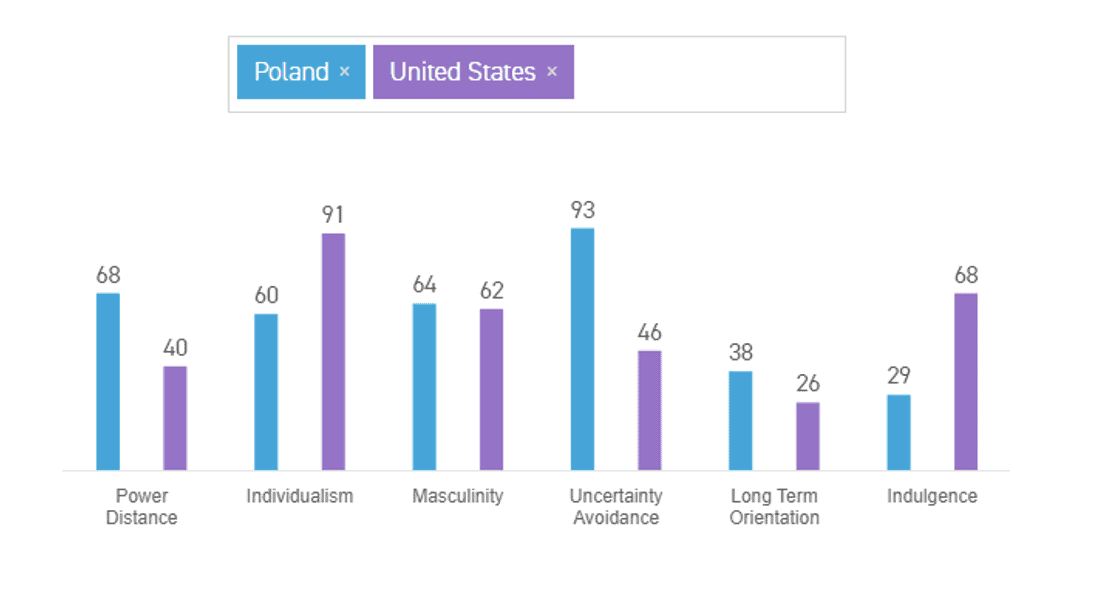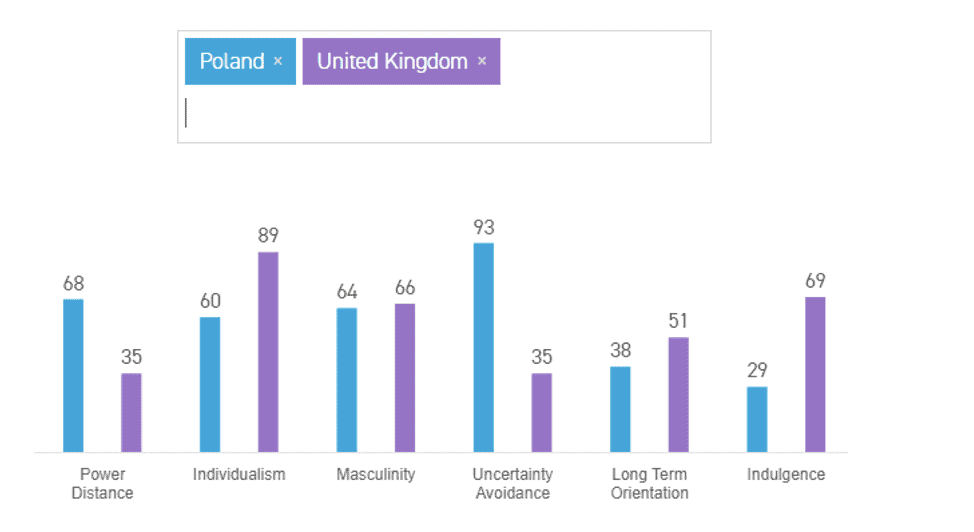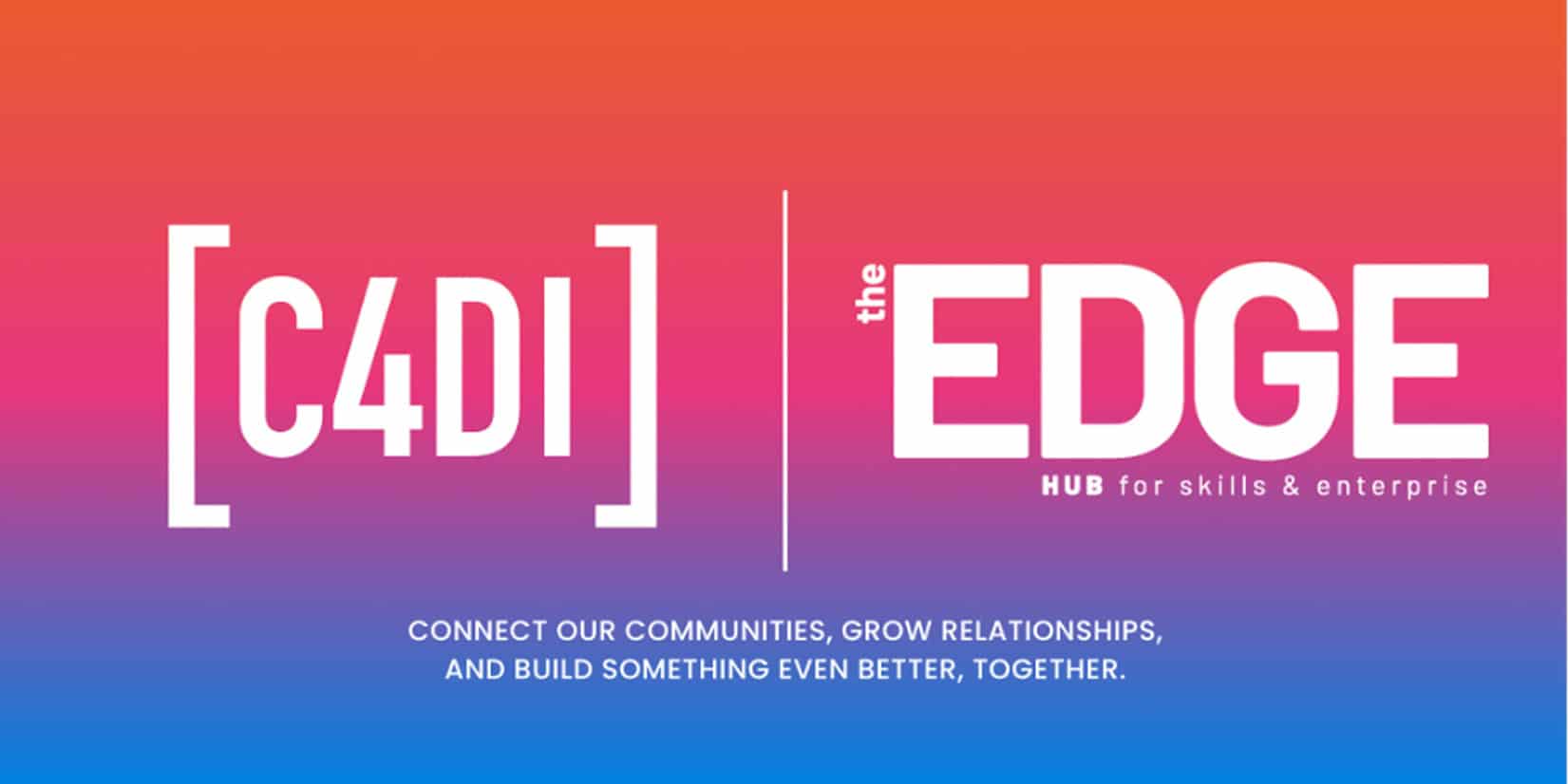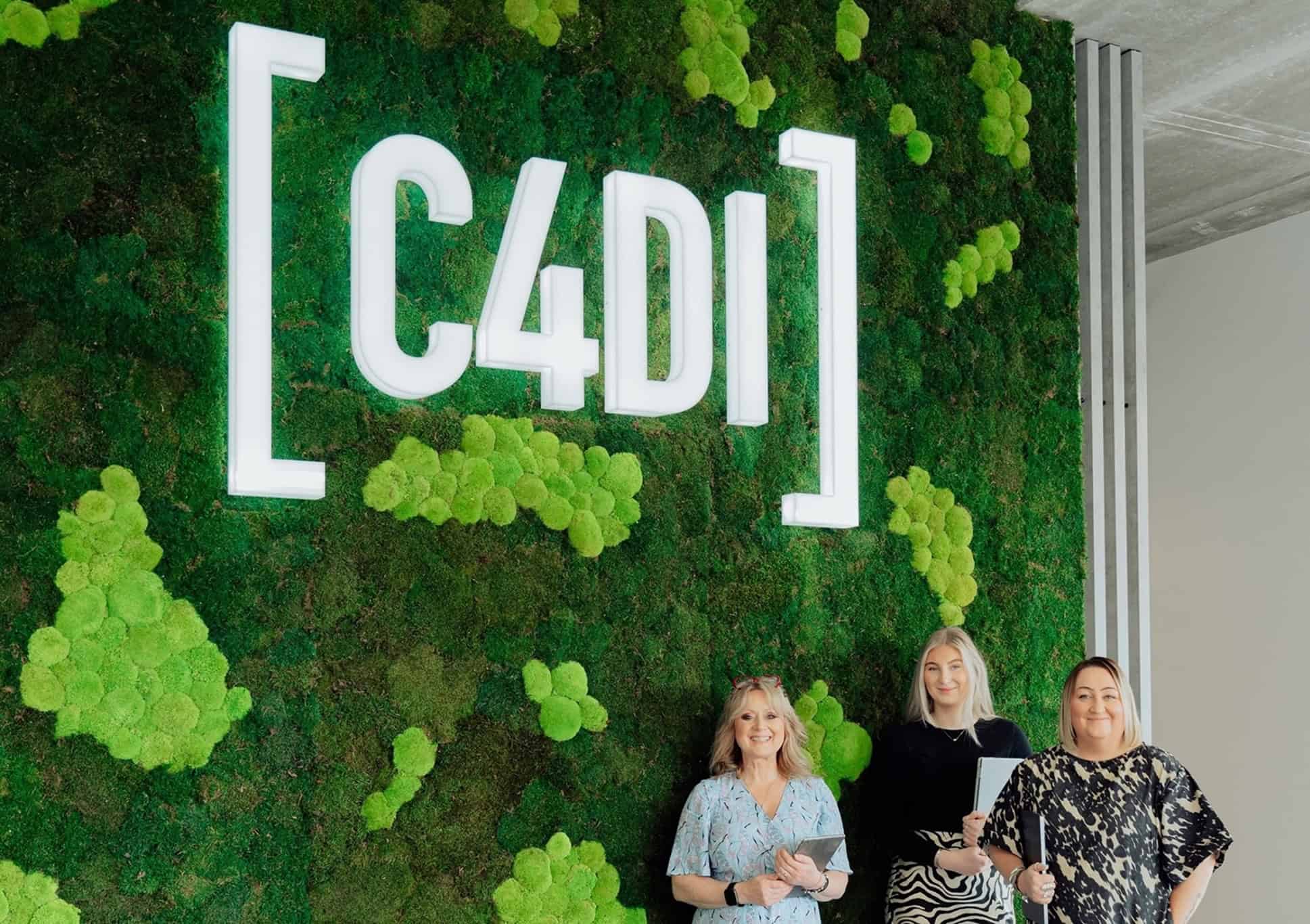Selling SaaS Across Cultures PART 5 │ Guest Post by Spence, Łanucha and Szczygieł
The authors of this article are:
o Bob Spence Director of International Business Development for C4DI.
o Kasia Łanucha Cambridge University lecturer and communication specialist.
o Kaja Szczygieł International Business Development Lead at C4DI also working in the U.S. Commercial Service at the U.S. Embassy Warsaw as a Commercial Assistant.
Are you involved in international business development?
Why you should care about the UK
It is the Number One sales revenue opportunity in Europe! Relatively speaking the United Kingdom has had a successful VC funding period in 2020.
London is an exceptional location to raise money but less exceptional in terms of available talent and scalable capacity.
The opportunity to subcontract, partner, collaborate, sell to, and engage with the UK market has more potential than anywhere else in Europe.
This is the current UK ‘spend potential’ in the Tech sector
• UK Tech VC investment is now 3rd in the world. $15bn in 2020.
• 63% of investment into UK Tech was International in 2020.
• The UK Tech ecosystem is valued at $585bn. 120% more than in 2017.
• Germany is valued at $291bn. (Less than 50% of the UK).
• The UK Tech sector launched a new business every 30-minutes in 2020.
Our articles will equip you to generate revenue from the UK economy as the material is designed to develop the right sales skills and sales approaches to succeed.
The content will be re-edited and rewritten into a unique comprehensive ePublication for release by Barclays Eagle lab C4DI later in 2021 entitled: ‘20/20 vision- the post pandemic sales approach’.
Each individual article has been developed and analysed with the goal to support CEE business development succeed in the English-speaking western economies. It is aimed especially to those CEE businesses that are focusing on making SaaS sales to UK and US decision makers.
Kasia: Our team explored the impact that national culture has on sales methodology and business development. Our examination was from a ‘CEE to Western perspective’. The reference point we used to measure the differences were the national culture models of Geert Hofstede. Prof Hofstede is renowned for his thinking and research on cross-cultural thinking. This is our main reference point although we refer to other thinkers throughout the series.
The evolution of sales methods in the early 1960’s and why this is important to you!
Kaja: Our narrative moves into the early 1960’s. A specific culture around selling has taken root. This sales culture is recognisable as a key feature of achieving sales targets and eventually becomes the norm in terms of generating success. The foundation of this culture is that the ‘will-to-win’ is more valuable than anything else within the business development process. Further it becomes recognised that there is a type of person and personality within this ‘will-to-win’ approach. It becomes the perceived key to generating sales success and exists today in the form of motivational material around selling. We have the stereotype of the sales representative. (Think of the ‘Groundhog Day’ insurance salesman).
Bob: This sales representative stereotype links this article into our first recognisable sales-model/sales-approach. It embraces the personality and persistence of the sales professional. However, it also hooks into the use of a variable pricing structure as a closing tactic. We suspect that this is probably the first mainstream thinking in our sequence of articles that business development professionals will be able to identify with today. The foundation of the ‘variable pricing’ approach is a very robust explanation of the offer. This is then attached to an immediate discount structure available. This discount is only possible if the prospect can make an agreement. This discount structure is normally connected to some form of deadline that the agreement will need to meet. The sales professional will be arguing the benefit case with the opportunity of acquiring a price discount that is linked to a deadline for closure. It requires a persistent style to achieve success.
Our first sales model
To expand this further there are variants of this approach. For the sake of our international interpretation, we will call it the ‘5-P’ sales model. There are various acronyms in use around this concept but for us it is essentially this:
o Product
o Pushing through
o Personality
o Persistence
o Pricing
Kasia: this approach was specifically designed at that time to communicate with the behaviour of the US consumer. It is designed to motivate the buyer into action before the deadline passes. The discounting process gives the impression that the buyer is generating the reduction in price by resisting the sales professional. The pricing structure is designed to offer these discounts and during this process the buyer is eventually swayed as they have generated a ‘great deal’ by their own behaviour.
The comparison between the national culture of the United States and that of Poland gives you a solid starting point that there will be differences as to how this sales approach maybe received.
You can identify that the rating for indulgence and individualism is different across these two cultures.
Indulgence stands for a society that allows relatively free gratification of basic and natural human drives related to enjoying life and having fun. Restraint stands for a society that suppresses gratification of needs and regulates it by means of strict social norms.
So what?
In terms of the lens of the buyer. Having a culture that has a ‘higher indulgence rating’ means that being gratified by being able to generate a price discount is more likely to resonate with United States culture than with a Polish culture. Personal gratification for the customer through succeeding in buying something and achieving a lower cost point can achieve results within context. If the culture that is being sold to within this concept needs to achieve the ‘lowest price point’ anyway this gratification does not exist. A culture with a lower indulgence level will not need to ‘feel good’ about a discount which means that this process has less value. To sum up. It is possible that Polish buyers expect a discount and will not be gratified by receiving one. This approach is unlikely to separate one sales professional from another.
Individualism indicates that there is a greater importance placed on attaining personal goals. The self-image of a person in this category is defined as “I.” Collectivism indicates that there is a greater importance placed on the goals and well-being of the group. The self-image of a person in this category is defined as “We”.
So what?
The concept of a sales process that includes negotiating to a lower price point to close the deal is rarely a collective effort. It is not designed to facilitate that. At the time when this sales process was developed the concept of linking the price point to the value point of the prospect was not considered. This thirst for individuals selling via discounts is less recognised as a pre-requisite for international business development and it is less effective in the UK generally.
In the UK, it is a general rule that the buyer will be looking to measure value in a manner beyond placing a high premium on the lowest cost point. There have been recent government procurement outcomes where the lowest price point has not resulted in the highest value. In fact, there has been failure in contract delivery through the engagement of the lowest price on more than one occasion. Anyone that is an experienced procurement lead will either have first-hand knowledge or second-hand knowledge that entertaining the lowest price is a far greater risk than discovering after that you have paid slightly over the odds but with a risk-free vendor.
Kaja: In terms of this sales approach, it is built around a process that has its foundation as the features of the product offer. These features are pushed through the ‘personality’ and the ‘persistence’ of the sales professional. It is the role of the sales professional to communicate with great enthusiasm the benefit-case for purchase.
Bob: as a sales process the features will be converted into benefits. Each feature discussed will be framed within the context of: ‘this is the benefit to you’. The benefits are linked into a variable pricing structure. Invariably the benefit case includes a financial return that is quantified by the sales professional. Such as:
‘As soon as we implement this you will see the benefit case of saving zloty 4000 per month in your business’.
‘To support you save money I can offer you an early bird discount of 10% if we can start the implementation within ninety days’.
‘To support you save money I can offer you a volume discount of 10% if we are able to supply a minimum of 10,000’.
‘To support you save money I can offer you an immediate discount of 10% if we can complete the paperwork by April 4’.
To support you save money I will be able to offer you a discount of 10% but this expires on January 5’.
These are variants of building a deadline onto the benefit case.
Kasia: Prior to the Internet the only way you could access a pricing structure was through a sales representative. The only other way was through attending trade events. So, this approach of face-to-face discounting would have more power than it does now. It can still be a professional sales tool to illicit a decision when appropriate though.
First takeout
Is this approach useful to SaaS business development?
Is this approach fit for purpose through the prism of two cultures?
This type of sales approach can still be relevant today. It is possibly more prevalent in the business-to-consumer marketplace as a successful method of getting results.
Kaja: It is true that many sales professionals in the SaaS sector, who are essentially tasked with delivering enterprise level transactions, enter the sales profession from success in the business-to-consumer market.
Bob: Not so many people will get the opportunity to enter the sales profession directly into the business-to-business segment. Generally, your career entry point has the impact to influence considerably how you approach your selling career. By default, you may be anchored to a variant of the ‘5P’ model. Often sales professionals are hired based on their success of using a variant of the ‘5P’ approach.
Second takeout
Would the ‘5P’ approach deliver value in the SaaS business-to-business market?
Is your default thinking the ‘5P’ approach?
What is the impact of ‘5P’ to you and your company in the marketplace?
Kasia: Bob Spence shared with me that he had to rethink his entire approach to sales meetings post his career in business to consumer. His journey was business to consumer, business to self-employed and then business to SME before business to corporate.
Third takeout
Within the SaaS sector it may also be true that a software technician has been tasked or seconded into the sales ‘front-of-house’ role without any of this selling background. Is that helpful or unhelpful?
Neither entry point into sales is wrong. They are simply different.
If your background is consumer sales prior to business sales the ‘5P’ sales model will make more sense to you. If you have a background in developing software, then this thinking may be new.
It can be true that your personality is part of the transaction process initially and at the start of a meeting the chemistry between buyer and vendor is the usual commercial platform to start from. However, in terms of ‘pushing’ a product to a buyer in SaaS this is not so straight forward, and this may need to alter based on whether you are talking about a service or a product.
Sometimes software offers can appear to the buyer to represent an aspirin looking for a headache.
No matter how persistent you might be in your argument it is fair to suggest that until your aspirin/solution has linked successfully to a headache/problem the pricing structure of what you offer does not have such weighting. It could be that if you are using this ‘5P’ model or thinking it may be to your disadvantage.
Fourth takeout
Be aware that sales skills need to evolve based on the market that you are in. The ‘5P’ model in our history of selling links with the era of the ‘born salesman’ and we thank the Harvard Business Review for this opinion:
https://hbr.org/2011/08/are-top-salespeople-born-or-ma
This thinking behind the success of the sales professional is ultimately a value structure based on an engaging personality and tenacious persistence. Give the professional a competitive pricing offer and by playing a simple numbers game they can make you sales. Even today people wake up in the morning and decide to go into selling with few or no skills. For them, their mental conditioning is the be all and end all.
Fifth takeout
Would the ‘5P’ approach to selling have any emphasis within the SaaS sales cycle?
Would the ‘5P’ model differentiate between Polish and Western buyer values?
Our next article?
This engages with the sales thinking that develops in the mid 1960’s as we enter the period of presentation-selling!
© 2021






